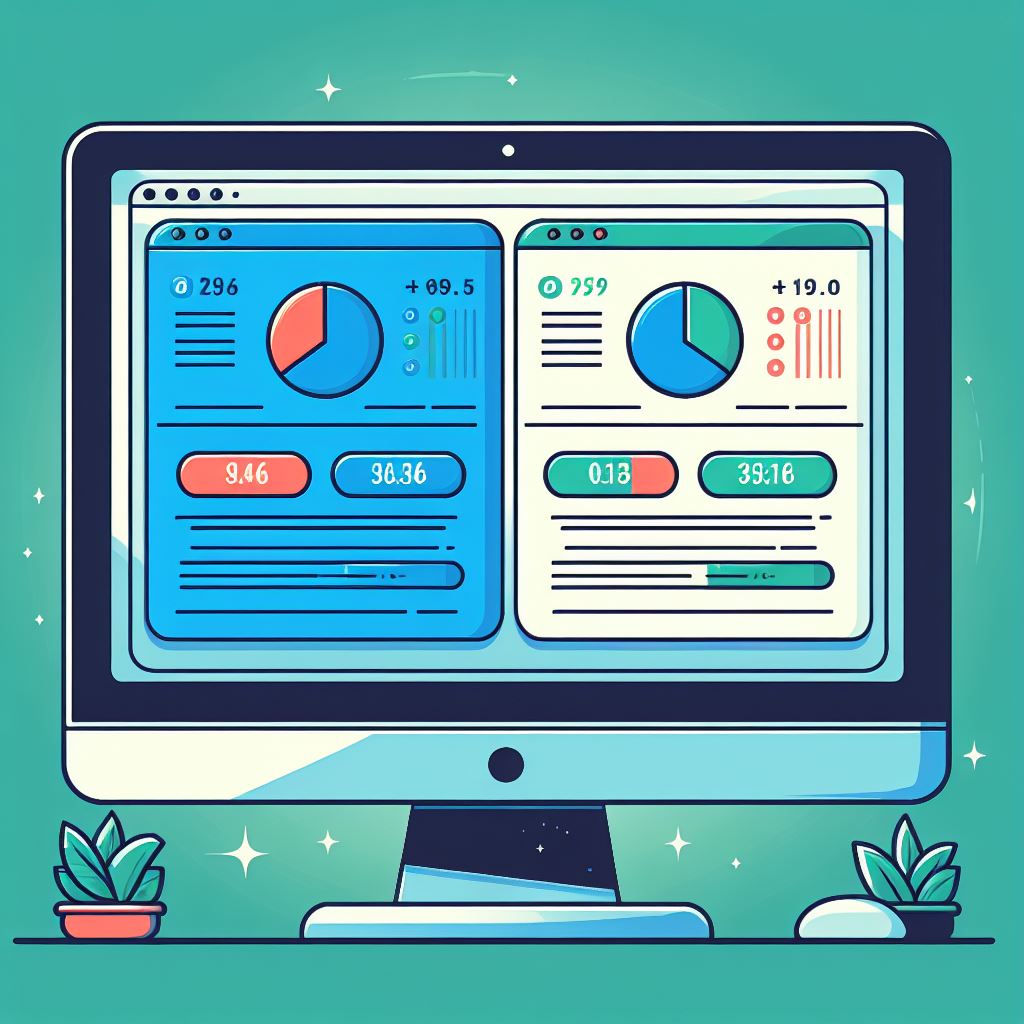In a world where digital landscapes are continually shifting, the ability to make data-driven decisions is not just an advantage—it’s a necessity. As Product Managers navigate this terrain, A/B testing emerges as a compass, pointing towards what truly resonates with users. But how does one harness this tool effectively? Join me as we demystify the basics of A/B testing, turning complex concepts into actionable insights.
Introduction: A Tale of Two Versions
Imagine you’re at a crossroads, and each path represents a different version of your product feature. Which path leads to success? This is where A/B testing, or split testing, plays a pivotal role. By comparing two versions (A and B), you can see which one performs better based on objective data. This article will unravel the essentials of A/B testing, ensuring you’re equipped to elevate your product management game.
A/B Testing Unpacked
To set the stage, let’s break down the main components of A/B testing into digestible segments. Understanding these elements is crucial for applying the methodology effectively.
What A/B Testing Is and Isn’t
- Definition: A/B testing is a method of comparing two versions of a web page, application feature, or other product offerings to determine which one performs better.
- Common Misconception: It’s not about going with your gut feeling; it’s about letting user actions guide you.
“A/B testing shines a light on the path your users prefer, not the one we assume they do.”
The Anatomy of an A/B Test
- Test Group: Users who see version B (the variant to be tested against the control, version A).
- Control Group: Users who see version A (the original version).
- Variables: The elements that are changed between versions A and B.
- Metrics: The success metrics or Key Performance Indicators (KPIs) that will be used to evaluate the performance of A vs. B.
Planning Your A/B Test
Before diving into A/B testing, clarity on what you aim to achieve is paramount.
- Identify the Objective: Pin down what you’re trying to improve. Is it increasing newsletter sign-ups, boosting product purchases, or something else?
- Choose Your Variable: Decide on the one aspect you want to test, whether it’s a headline, a call-to-action button, or an email subject line.
- Set Your Success Metric: Clearly define what success looks like. This could be conversion rate, click-through rate, or any other relevant metric.
- Understand Your Audience: Segmentation can help ensure the test’s accuracy. Know who you’re testing on to ensure relevance.
Implementing Your A/B Test
Implementation can make or break the testing process. Here’s how to ensure you’re setting up your test for success.
Technology and Tools
Choosing the right tools is crucial for effective A/B testing. Options range from Google Optimize (free) to more sophisticated platforms like Optimizely or VWO. Ensure compatibility with your current tech stack.
Ensuring Statistical Significance
To trust your A/B test results, you need a significant sample size and testing duration. This prevents anomalies from skewing your data. Tools like Evan Miller’s Sample Size Calculator can help determine the right size for your test.
Review and Iteration
A single A/B test won’t revolutionize your product, but a culture of iterative testing and refinement can. Analyze your results, learn from them, and continuously improve.
Beyond Basics: Advanced Tactics
Once you’ve mastered the basics, explore how multi-variant testing, sequential testing, and other advanced strategies can uncover deeper insights.
A/B testing examples
A/B testing, also known as split testing, is a method used to compare two or more versions of a webpage, app, or marketing campaign to determine which one performs better in achieving a specific goal.
Let me narrate a few examples of A/B tests across different scenarios:
- Website Landing Page:
- Variation A: The original landing page with a prominent call-to-action (CTA) button in blue color.
- Variation B: A modified landing page with the CTA button in green color.
- Goal: Increase click-through rate (CTR) on the CTA button.
- Hypothesis: Changing the color of the CTA button will attract more attention and result in a higher CTR.
- Metrics: CTR, conversion rate, bounce rate.
- Email Marketing Campaign:
- Variation A: Subject line: “Save 20% on Your Next Purchase!”
- Variation B: Subject line: “Limited-Time Offer: Don’t Miss Out on 20% Off!”
- Goal: Increase email open rate and click-through rate.
- Hypothesis: The urgency and exclusivity conveyed in Variation B will entice more recipients to open the email and click on the offer.
- Metrics: Email open rate, click-through rate, conversion rate.
- E-commerce Product Page:
- Variation A: Product page layout with customer reviews displayed below the product description.
- Variation B: Product page layout with customer reviews displayed prominently near the top of the page.
- Goal: Increase conversion rate (product purchases).
- Hypothesis: Placing customer reviews higher on the page will provide social proof and encourage more users to make a purchase.
- Metrics: Conversion rate, average order value, time on page.
- Mobile App Feature:
- Variation A: The original version of a social media app with a “Like” button for posts.
- Variation B: An experimental version with a “Love” button replacing the “Like” button.
- Goal: Increase user engagement with posts.
- Hypothesis: Introducing a more emotionally expressive “Love” button will encourage users to engage more frequently and deeply with content.
- Metrics: User engagement metrics (likes, shares, comments), time spent in the app.
- Subscription Pricing Plans:
- Variation A: Current pricing plans for a subscription-based service: Basic, Standard, Premium.
- Variation B: Revised pricing plans with additional features and higher prices for the Premium plan.
- Goal: Increase revenue per user (ARPU) without significant loss of customers.
- Hypothesis: Offering more value-added features in the Premium plan will justify a higher price point and increase ARPU.
- Metrics: ARPU, churn rate, conversion rate.
These examples demonstrate how A/B testing can be applied across various aspects of digital marketing, user experience design, and product development to optimize performance, increase user engagement, and drive business growth.
Conclusion: The Journey of Continuous Improvement
A/B testing is more than a technique; it’s a mindset rooted in curiosity and an unwavering commitment to improvement. By embracing the basics we’ve covered and continuously refining your approach, you’re not just testing—you’re transforming your understanding of what your users want and how to provide it.
Remember, the goal is not to validate our assumptions but to challenge them and let user behavior drive our decisions. So, here’s your call to action: Start with one small test. One feature, one button, one headline. Let the data guide you and let the journey of discovery begin.
“Embrace A/B testing as your compass in the ever-evolving landscape of product management, and watch as data-driven decisions propel your product forward.”



